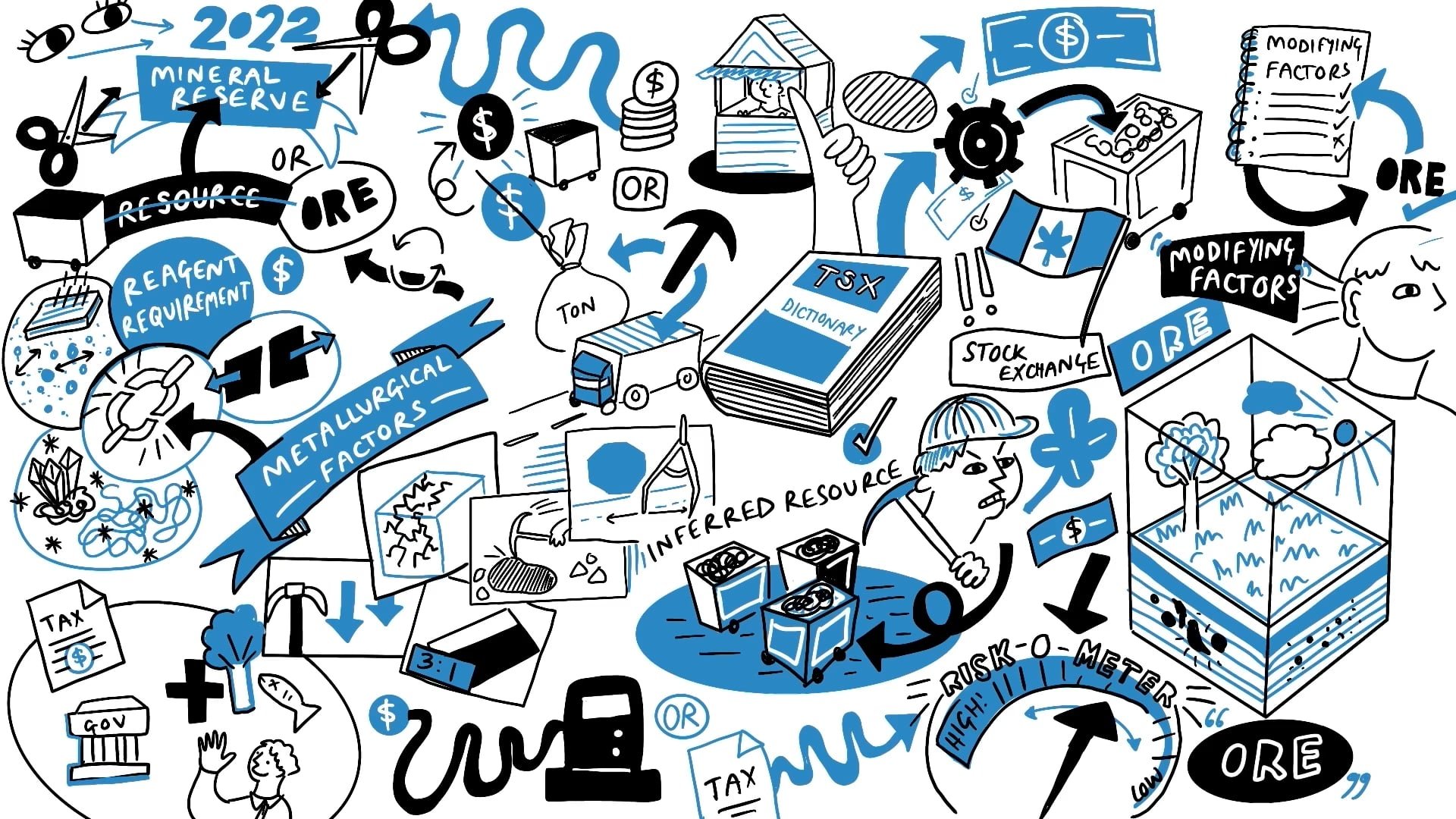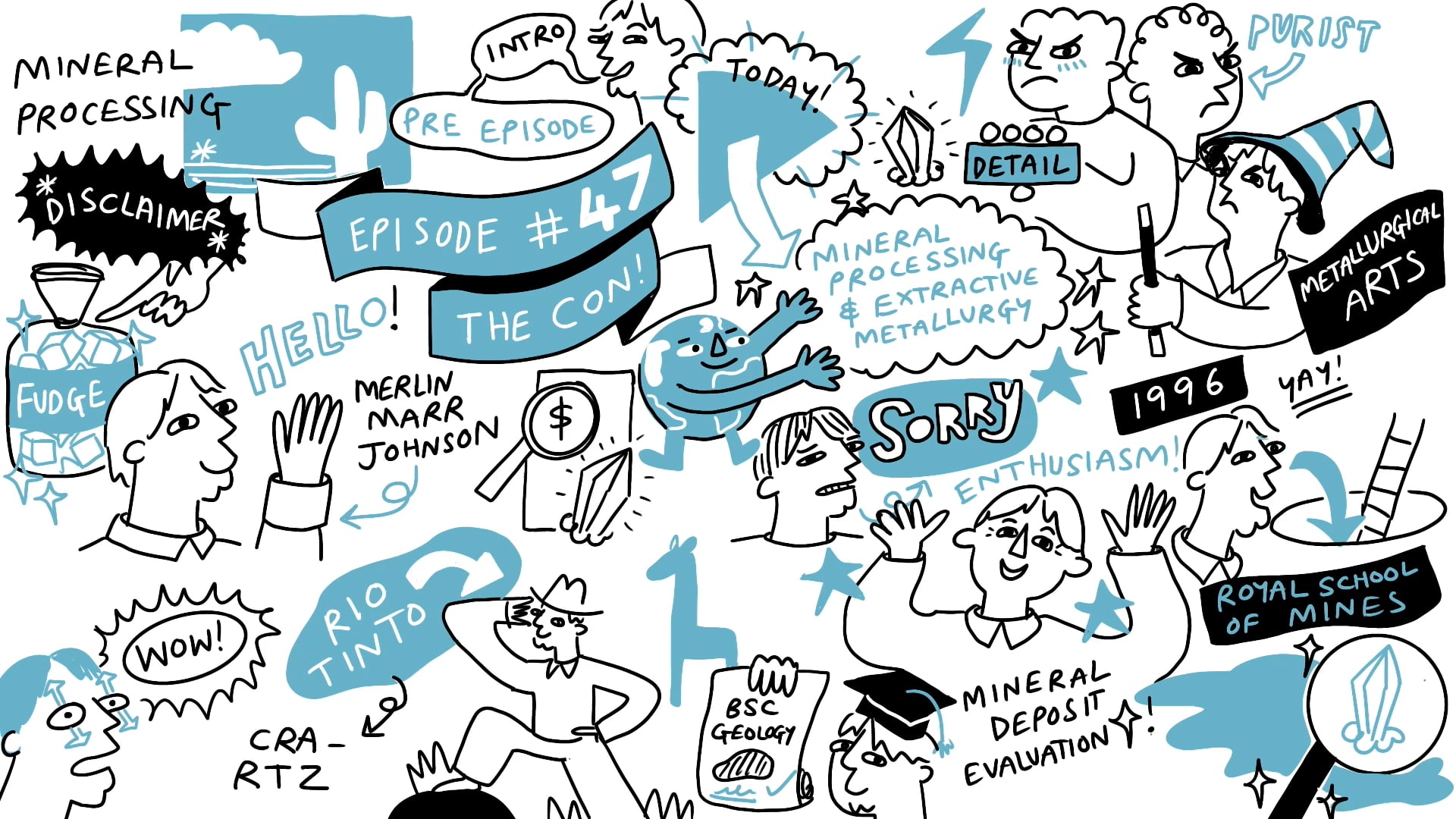Commodity: Cost Curves and Individual Commodities

More episodes
Transcript
Cost Curves
Before looking at individual commodities, we need to understand the concept of something called a cost curve. A pure definition of a cost curve is a graph of the costs of production as a function of total quantity produced. Let me try and expand and explain that. The y-axis, the upright one, the lower portion represents the lowest cost of production, rising ever higher up the y-axis to the most expensive production. The x-axis represents the amount of supply for any given cost. The x-axis can be shown either in production units such as ounces or tonnes, or expressed as a percentage of total supply. Then the x-axis is normally divided up into quartiles, so that the graph can be read simply.
The lowest cost block of production, normally shown by producing entity, or whether that's a company or a division of a company, or a mine or a project, is plotted first along the x-axis, and the width of the column represents how much is produced at that cost. Then the next most costly block of production is plotted, again with its width representing the amount of supply at that particular cost, and so on. The graph keeps being added to, varying widths according to how much production there is at that price along the x-axis until 100% of all production is captured with the right-hand-most column being the most expensive supply currently in the market.
Each commodity has its own specific cost curve and its own specific dynamic which is really important to understand when trying to assess the investment potential of a new company or a new project. For example, in an industry which is dominated by few players with low costs of production such as iron ore, it will be extremely hard for a new entrant to survive, let alone compete with the giant low-cost production bases of Vale, Rio Tinto and BHP.
In a highly fragmented market where there are thousands of contributors to the cost curve and no one entity has pricing power, such as gold, any new project can probably slot in next to another without too much trouble, providing it's economic, of course. Creating these cost curves requires a deep understanding of the metals markets, and they are real devils to produce. That is how commodities analysts earn their stripes.
The curves are so important though, as they enable proper analysis of the supply side of the commodity to be done. How elastic or responsive to changes in metal prices is the supply? How inelastic is it? Are there strategic producers that will defend their operating base through trade tariffs or subsidies or simply just by undercutting the price? Is there byproduct supply in a commodity that will ensure supply of metal no matter what the price?
Are metal prices so far below the cost of new supply that a new price range has to be established, it has to emerge in order to incentivise a new raft, a new wave of production. We can't cover everything in a short podcast, but here are some general observations.
PGMs and Precious Metals
Now, interestingly, once they are refined, precious metals are fungible and of a standard quality, and they can be traded anywhere around the world. They can be deposited in warehouses or almost pure products sent to refineries for refining to reach an accredited
standard so that it becomes entirely fungible, whether that's gold or platinum, palladium or silver, and they can be then traded on the terminal markets in New York, London or Shanghai. So far, so good, but there is a different set of barriers to entry to the PGMs as to gold or silver. And the cost curve, determining the supply of silver has a very different structure to the cost curve determining the supply of gold.
So even within this tiny subset of similarly traded commodities, there is a completely different set of factors that need to be understood before making your investment. Complicated? I'm afraid so.
Bulks
The bulks are contract-based large markets, such as iron or thermal coal or possibly potash. These are large volume markets, but they're actually contract-based and pricing is much less transparent than for commodities that are traded on terminal markets. The product is much less fungible, and critically the operations require a vast amount of capital to bring them into production. Remember that the product that is being sold is more or less the whole volume of the ore that's being mined, so the logistics around this industry are just mind-boggling. And it is not just the significant capital that's required, significant expertise is just as important. The capital. The complexity plus the opacity of the pricing of the commodity are the key components in understanding the barriers to entry. It is just so hard for a junior to find a bulk asset that is going to get a good price from a major. Either the project is far from the major's existing infrastructure and therefore will be worth cents on the dollar to them, or it is close, but will almost certainly have been reviewed and rejected by them. When a junior tries to get you excited about one of these bulk projects, the safest bet is to stay calm and do nothing. Oh, and if a junior mentions magnetite iron ore to you, trust me, run away.
Market size
Just to put things in perspective, the iron ore market is 1.3 billion tonnes per annum. The thermal coal market is a billion tonnes per annum. The copper market, which is one of the major base metals, being one of the largest volume base metals is traded on terminal markets. It's got warehouses all around the world. It's between 20 and 21 million tonnes of refined products of annual mine supply, plus another four million tonnes of secondary supply. So you're talking around a 25 million tonne market. Zinc's around 14 million tonnes, lead 12 million tonnes. And then there's this huge drop down to nickel, which is 2.6 million tonnes of nickel metal produced on an annual basis. And then you start looking at some of the small commodities, something like tin or cobalt. I mean, tin is only 360,000 tonnes per annum of mine supply and cobalt is only 140,000 tonnes per annum. These are tiny markets.
So, let's say you want to get involved in the battery sector or in the electrification thesis. You've got a choice, the electrification theme. You've got the choice of copper, which is a 21 million tonne per annum market, or cobalt, which is a 140,000 tonne per annum market. Now, the ability for a new producer or a new bit of the mine supply to come on and enter into the market is obviously much greater in a larger, more liquid market than it is in a smaller, less transparent, illiquid market that's contract-based. So what you get is price stability and price security and more people who will be interested in actually buying your mine if you're in copper than you are in cobalt. Cobalt it is a niche product. There are very
few people who will actually want to buy you. Whereas in copper everybody's going to be looking for a copper mine. And don't forget that a vast amount of the cobalt supply curve comes as a byproduct of copper production or nickel production. So it doesn't really matter what the cobalt price is going to be doing. You're still going to get the same amount of supply. So it's the pricing of cobalt is one of the hardest things to do.
Gold and silver. In gold, there's 107 million ounces of gold produced per annum, and there's almost a billion ounces, 840 million ounces of silver produced on an annual basis. Yes, they are big markets, and of course, the gold futures market, the silver futures market is even larger, and they're trading on a daily basis. So you've got real liquidity and real depth in the market. That's a huge advantage when you're looking at it. It's something that people probably don't often look at when they're investors, but it really offers your company so many more options. And then if you want to get into the crazy end of complexity and difficulty, you can come to the smaller, the specialist metals. Now I often see these companies which are offering superb projects and come on an NPV basis and are really exciting. And then you actually think about it, well hang about, how are they gonna sell this stuff? And of course, for me personally, I never forget that silver is mostly produced as a by-product. You know, it's a byproduct of lead production. It's a byproduct of zinc production. It's a byproduct of copper production. It's a byproduct of gold production. So silver doesn't really have a cost curve. Yes, there are some silver mines out there contributing into the mine supply, but fundamentally the pricing of silver is relatively arbitrary. So I'm a great fan of gold.
Kicking on, let's look at graphite. The graphite market for example is 1.1 million tonnes per annum and here we get into the really specialist areas. Everybody interested in future metals and batteries and solar panels in modern life will know that graphite is kind of a key component. But actually if you're a graphite producer, how do you sell your product and what is your product and who do you sell it to? There's flake graphite, there's chip and lump graphite, there's amorphous graphite.
Who are your buyers? You can't just sell it to a warehouse and realize your cash. You're probably going to have to enter into lengthy contract negotiations with obscure Chinese groups or different groups from around the world who'll have their own approach to doing business, their own language barriers, your cultural differences. You might be set up to deliver one kind of chemical composition to one specific customer who then decides actually that they found somewhere closer to home or a different group and then you have to rejig your entire manufacturing process, your entire operating process in order to be able to provide the right chemical grade with the right balance of minor elements in your graphite or the right mix between chip, lump, flake, amorphous for a different customer. So suddenly it becomes incredibly difficult to actually sell your product. Lithium. Another favourite market of course are the rare earths or lithium. For lithium it's a 77,000 tonne per annum market or it was in 2019 and that's grown. It's grown threefold. The lithium market has grown threefold in less than 10 years and is predicted to grow from here. But again, you've got lithium oxide and lithium hydroxide. You've got lithium carbonate, which is mixed between other types of lithium carbonates and pharmaceutical grade. You've got battery grade, you've got alkaline metals. It's a minefield of subtypes and specific arrangements or of specific types of lithium product, which means that you've got a very small market to begin with. And each of these various sub-markets are even smaller, and you're dealing direct with customers. It's an absolute mission to find a reliable off-take arrangement, and you're dealing with a market which has got a number of very large players. You've got the Chileans and the Australians, and you can find yourself at the wrong end of a pricing agreement and on the wrong side of a supply cost curve.
Coming back to gold, if you're producing gold, it's absolutely no problem at all. You just produced your gold, and you either sell your concentrate - there are lots of outlets for that - or you do a commercial deal with your smelter or you sell it to a refiner or you produce a doré ,you sell it to a refiner and the terms and economic arrangements the commercial terms with these refineries are very standard so you know what you're getting
Finally, I'm just going to mention nickel, because it's such an interesting metal. It's a 2.6 million tonne per annum market. Historically most metal supply from the juniors has come by working sulphide ore, mining at depths where the ore is still in its sulphide form, as in it hasn't been oxidised, exposed to oxygen through air or water, and the companies will produce a sulphide concentrate, a nickel-rich concentrate, which can then be smelted to produce a metal. Now, those sulphide ores have been harder to find over time. They are increasingly scarce. And when you look at nickel, there's been a growth in the laterite production because the sulphide ores have been so hard to find over time and they've been reducing in size, and there's a lot of laterite nickel. About 70% of the global resources are actually sitting in nickel laterites.
These are tropical weathered ultramafic rocks which have leached most of the minerals out, creating a new suite of nickel minerals. They have complex metallurgy and you can produce nickel metal through SXEW (solvent extraction, electron winning) and or High Pressure Acid Leaching. The barriers to entry in nickel laterites are formidable both in terms of expertise and capital required.
So many junior companies chase after nickel. It's not as simple as that. In a separate session, we'll look at mineral processing, but essentially, nickel mineral processing is complex and difficult for laterite ores, which are more abundant than the sulfide ores. And those sulfide ores are traditionally easier to produce, but they're getting harder and harder to find. So on a market of 2.6 million tonnes, you've got to really, whether you're a new entrant or a company with a nickel project.
Yes, you've got to understand that the supply and demand fundamentals look good, but you've got to think about, well, crikey, well, how are we going to get this out of the ground and how are we going to sell it? Who's going to want to buy us? Because if you look at the majority of nickel production, it's actually a very tightly held concentrated industry. You've got Vale producing 200,000 tonnes, Norislk Nickel 166,000 tonnes, Xinshuang producing 150,000 tonnes, and Glencore on 121,000 tonnes, and let's not forget BHP on 87,000 tonnes of Nickel per annum. So all of these major companies are only going to want to take your project if it's going to offer them a better return than it does investing in expanding their existing operations or advancing some of the projects that they've almost certainly got in their development pipeline. As tempting as it may be to get involved, Nickel is not for the faint-hearted.









































.jpg)
.jpg)
.jpg)
.jpg)




















